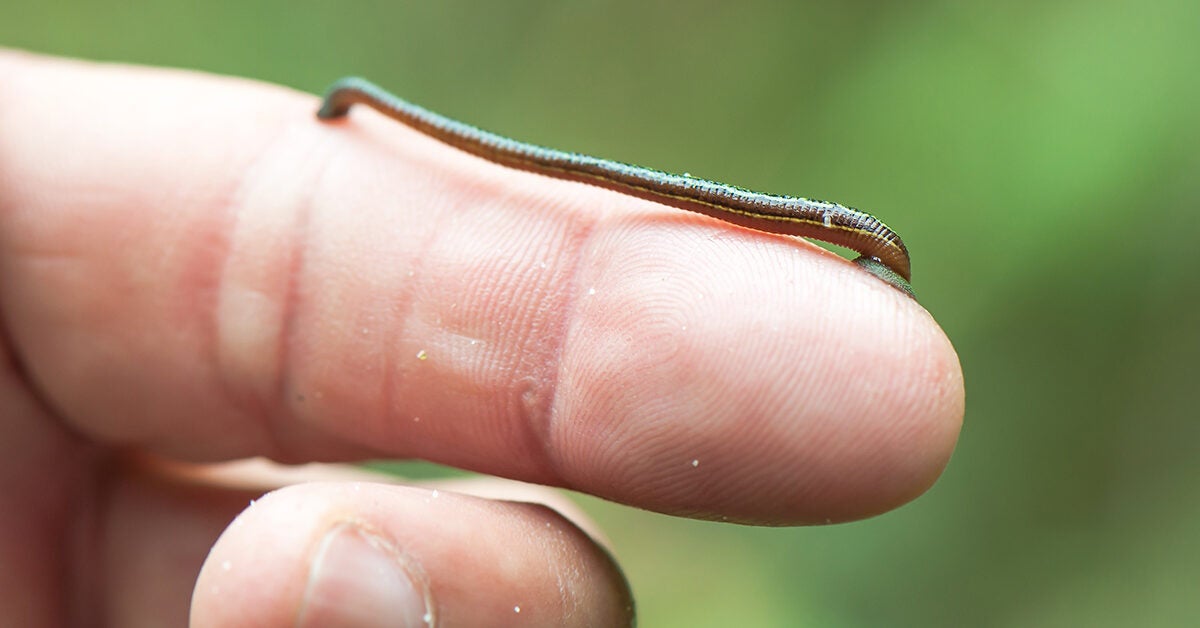How to Remove a Leech: Steps, Treatment, & More - Healthline

Outdoor activities like swimming and hiking are a great way to stay healthy. But they can also sometimes lead to rashes, sunburns, bug bites, and parasites.
Leeches are a type of parasitic worm you might encounter in grasses and fresh water. These creatures can attach themselves to humans and feed on their blood. Leeches can also expand up to 10 times their size while feeding, allowing them to consume a lot of your blood at one time.
Finding a leech on your body can be scary, but you don't need to panic. Following a few simple steps can help you calmly and safely remove a leech without any pain or complications from the bite.
Your first step in removing a leech is finding it.
If you spot a leech on your skin, check the rest of your body to see if any more have attached themselves to you. Once you find a leech, you can begin to safely remove it.
You can also try these alternative methods for removing a leech:
- Using a piece of paper or a credit card instead of your fingernail. For this method, you'll follow all the same steps as above, but you'll slide a thin piece of paper or a credit card under the leech's mouth instead of your finger.
- Letting the leech fall off naturally. You can wait for the leech to detach itself when it's finished feeding, especially if you're having trouble removing it.
Removing leeches from difficult locations
Leeches will sometimes attach to hard-to-reach areas, such as your ear canal, nose, or mouth. This can make it difficult to use the above methods for removal. If this happens, try one or more of the following:
- Use rubbing alcohol or hydrogen peroxide. To remove a leech from your mouth, gargle with alcohol or hydrogen peroxide for about 30 seconds. Swish the alcohol or peroxide in your mouth like mouthwash, then spit it out. Check to see if the leech comes out with it.
- Puncture the leech. Leeches can grow up to 10 times their original size when they're feeding. Sometimes, this can cause them to block an area like your nose or ear. Use a sharp object to pop the leech, killing it and making it easier to remove.
What not to do
Do not remove a leech using any of the following methods. These can cause the leech to vomit blood into your wound and increase your risk of infection:
- salting
- fire
- shampoo
- bug repellant
Leeches are long, tube-shaped animals. They're similar in appearance to worms and can be anywhere from just a few millimeters to up to 10 inches long.
Most leeches have visible eyes on the top of their bodies and round mouths with several rows of teeth. Leeches can be spotted, striped, or solidly colored. They have two suckers on each end of their bodies. Leeches use their suckers to grasp, feed, and move around.
Additionally, leeches are generally:
- flat
- wide
- segmented
- dark in color
Leeches are commonly found in freshwater lakes and in tall grasses. Check out the gallery below to get an idea of how to spot a leech.
Contact a doctor if you can't remove the leech yourself or if your wound becomes infected. Signs of infection include:
- fever
- pain
- redness
- discharge from the wound
Some people experience an allergic reaction to leech bites. If you experience a mild reaction, take an over-the-counter antihistamine.
A severe allergy is rare, but it's best to be on the lookout for symptoms, including:
- painful and persistent rash around the bite area
- swelling near the bite
- dizziness
- trouble breathing
Seek immediate medical attention if you have trouble breathing or feel confused, disoriented, or about to lose consciousness.
Most leech bites are harmless. Usually, the leech can be removed easily without the need for medical attention.
When you need medical attention or have trouble removing a leech, a doctor can use medical instruments to remove leeches in hard-to-reach places.
Once a doctor removes the leech and cleans the wound, treatment will depend on the wound and your reaction to it. Your doctor might suggest:
- specialized bandages to cover and protect wounds in places prone to infection
- antibiotic medications, creams, or ointments to prevent or stop an infection
- prescription-strength antihistamines to stop allergic reactions
- ice or cool compresses to help with any swelling
Leech saliva contains a substance that stops your blood from clotting. This anticoagulant can promote blood flow and wound healing.
Medicinal leeches can be used in plastic surgery to help tissues heal. They're also sometimes used to treat conditions such as blood clots and varicose veins, and to help prevent diabetic tissue death.
Leech therapy has been used in medicine for thousands of years. But leech therapy should always be done with medicinal leeches under controlled conditions. Do not try this type of therapy at home without supervision from a medical professional in a sterile environment.
Finding a leech on your skin can be alarming, but leeches aren't generally harmful.
You can carefully remove a leech by using your fingernail or a sheet of paper to separate the leech's mouth from your skin. Don't use methods such as salting, burning, or drowning to remove a leech, as these can lead to infection.
Contact a medical professional if you're unable to remove a leech, experience any signs of infection, or have an allergic reaction.
Comments
Post a Comment